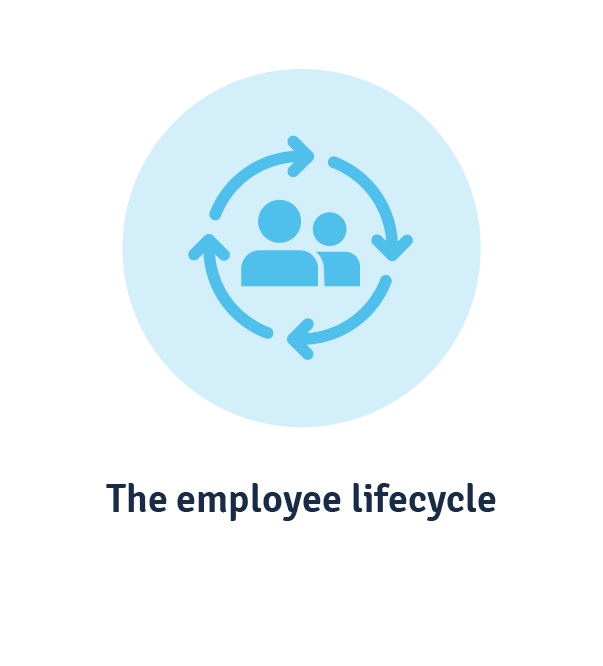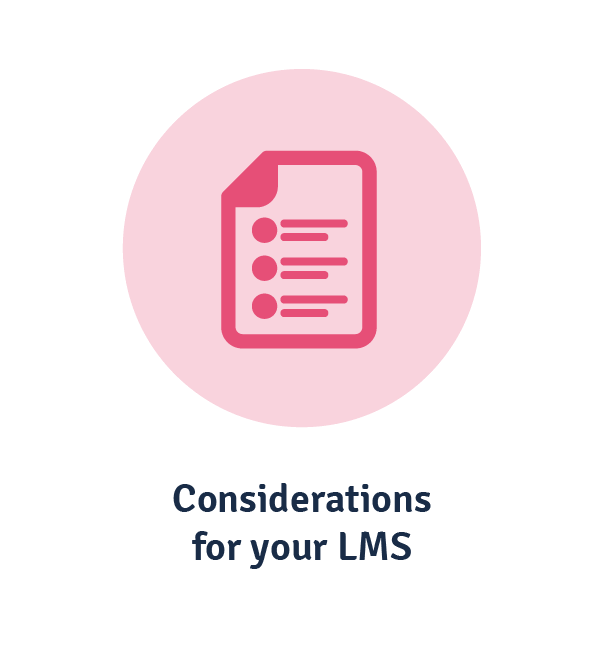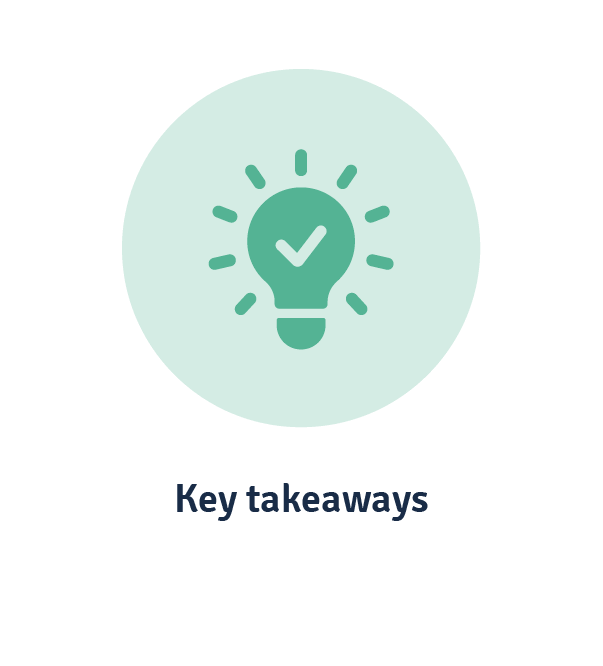It’s no secret that one of the keys to running a successful company is having happy, motivated employees. Keeping this positive spirit going at every point along the employee lifecycle requires continuous learning and new challenges, helping them to grow their skillset and maintain an enthusiasm for their work.
Though an LMS can obviously come in handy during the specific onboarding process, its usefulness actually extends to all stages of the employee lifecycle. Here, we’ll explain how you can optimise the learning path of your company’s employees and stay competitive in your industry.
The employee lifecycle
Though there are numerous different models that represent the employee lifecycle at a company, it commonly contains the following five stages.
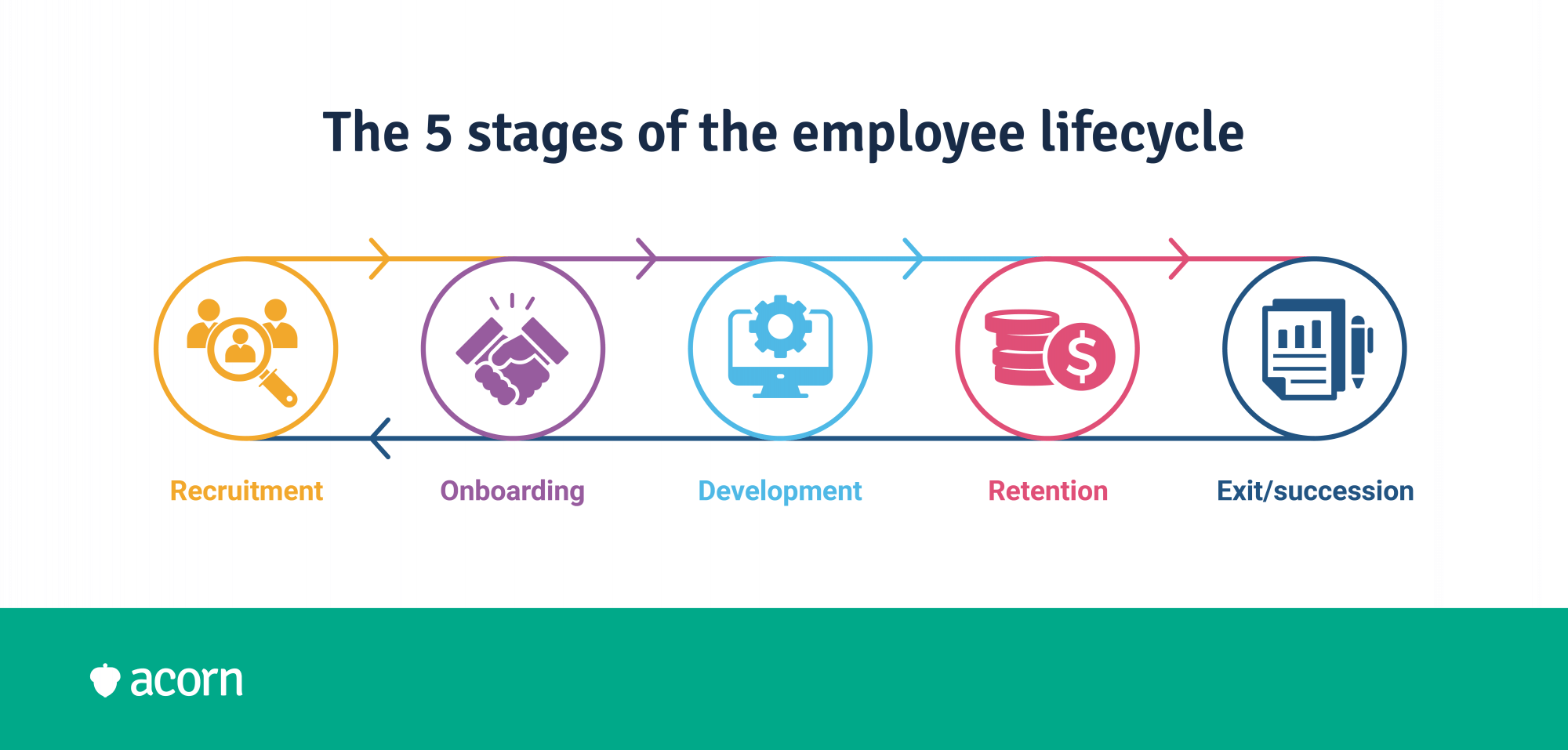
- Recruitment: A potential candidate is made aware of an available position at a company and applies for it. They interview for the position and, if they prove to be a good fit, are hired by the company.
- Onboarding: The new employee is guided through not just what their own role and responsibilities will be, but what the company does, what its internal culture and objectives are.
- Development: The employee, having proven themselves to be capable and trustworthy, is given the opportunity to begin to progress internally in the company and take on new tasks and responsibilities.
- Retention: The employee continues to move up within the company, learning new skills and delegating old tasks to newer team members.
- Exit/Succession: Whether it’s time for retirement, a new company, or something else entirely, all good things must come to an end. The employee leaves the company, ideally after helping to identify a successor to take over them.
There are certain situations where an LMS is obviously a benefit – if training for regulatory compliance is needed, for example. However, the fact of the matter is that implementing an LMS can actually improve every stage of your employee lifecycle.
Integrating an LMS into each stage
In general, an LMS is a great way of providing your company’s employees with a self-directed method of learning. This can be seen in the following rundown of what integrating an eLearning platform into each step of the employee lifecycle can do.
Recruitment
Used effectively, a good eLearning platform can deliver not only pre-employment orientation, it can also provide potential candidates with a realistic idea of what they can expect to gain from working with your company – all before ever stepping a foot inside the door. This can include things as simple as making them aware of the company’s mission statement and corporate identity, and as complicated as providing them with a simulation of their proposed job.
Onboarding
Once the employee is selected, onboarding begins. An LMS can help provide employees with access to the system prior to their first day, which can allow them to orientate themselves with the culture of the company. Onboarding, always involves the establishment of relationships with colleagues, managers and subordinates, while also providing them with the skills and knowledge necessary to fulfil their role effectively. Providing a new hire with accessible, helpful eLearning courses prior to commencement and during their first few weeks is a proven method for keeping them in the company – recent research has shown that a great onboarding experience can increase new hire retention by up to 82%, while increasing overall worker productivity by up to 70%.
Development
As an employee gains experience within your company they develop their skill set and, quite often, look to advance and take on more challenging and important tasks. Having an LMS that charts out a kind of roadmap for employees is a great way to show them what kind of track they are on and what they have to do to achieve their personal and professional goals. This is where an LMS proves to play a truly crucial role in employee training – by demonstrating to them how continued learning is the best way to get ahead professionally.
Retention
For your company to successfully retain its employees, they must be invested in their position and in the company’s broader purpose. This investment is a two-way street, however. By providing an eLearning platform that continues to provide training and guidance for even the experienced employees, they will be able to see that your company has invested its resources in their success. Giving employees avenues and training programmes to broaden their skillsets is a necessity for long-term success – as an IBM study found, 84% of employees in the best-performing organisations feel as though they are receiving the training they need.
Exit/Succession
The focus at this stage is not on providing further eLearning content for the outgoing employee, but rather enabling a mechanism for them to be able to pass on their knowledge and experiences to their successor. By integrating an LMS into this stage of the employee lifecycle, the development of up-and-coming employees will be expedited and organisational knowledge loss minimised.
Want to see Acorn PLMS in action?
Hit the book a free demo button here, take seconds to fill in your details, and find out how Acorn can help you succeed.
Benefits of an LMS
At first glance, integrating an LMS into each stage of the employee lifecycle at your company can seem like a daunting task. The truth is that while it may take substantial resources to implement, a good eLearning platform should ultimately provide considerable benefits for your company and its current, new and future employees.
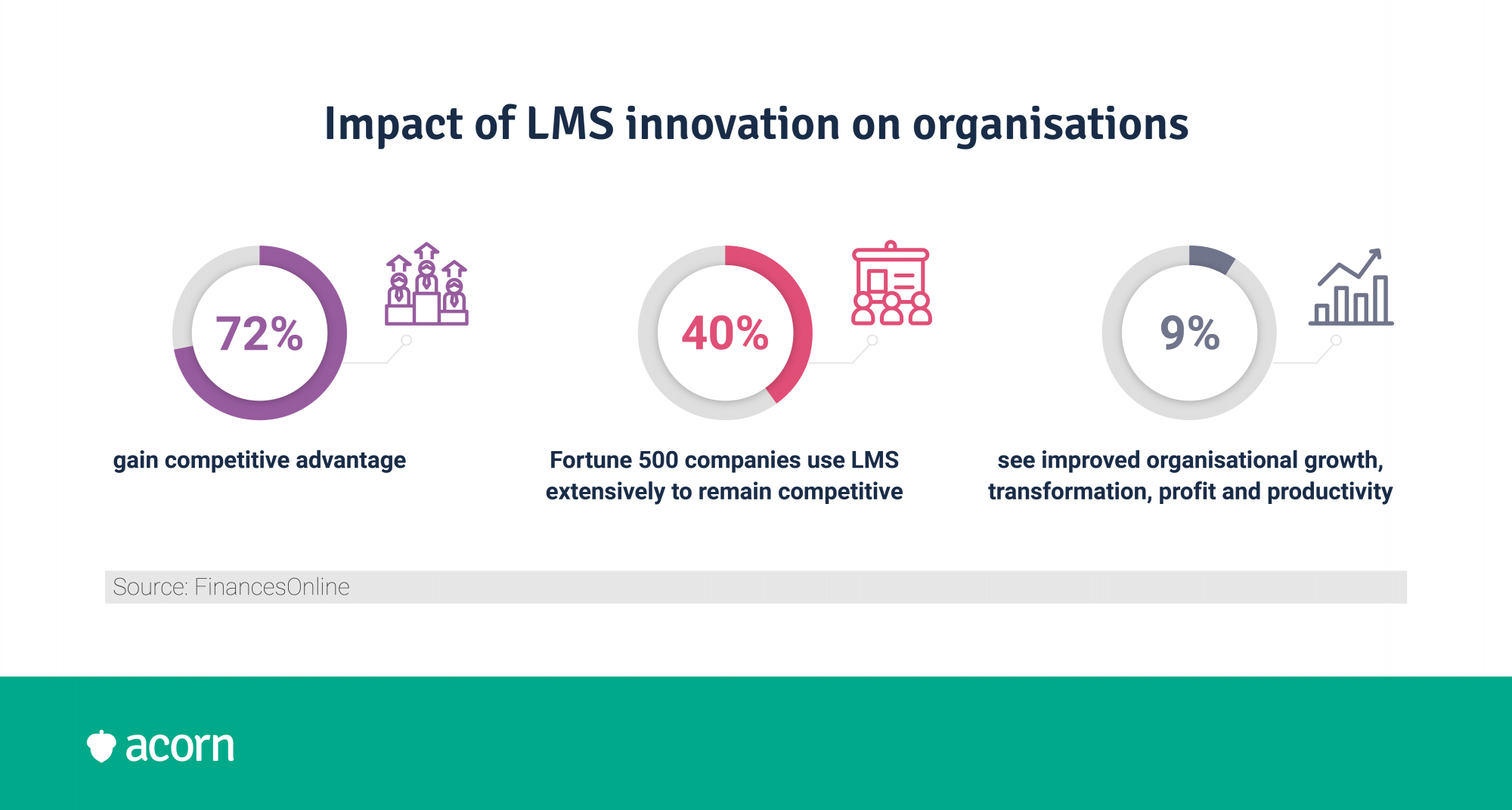
Consistency
Rather than having several different educational formats for different departments, an LMS provides a single centralised location for hosting all of your eLearning content. By doing so, your company will be able to develop a logical and cohesive approach to continuous education in the workplace, and can provide compliance education, testing and other resources across the entire firm without any issue.
Accessibility
Though it’s already been alluded to, an LMS enables your employees to engage in eLearning when they’re not even in the actual office. This is a clear advantage for educating an incoming employee, but can also prove to be beneficial for employees who tend to work remotely or travel frequently yet need to remain in the loop.
Measurability
An LMS retains a record regarding each employee’s relative progress and acumen for the specific skills and topics that the eLearning content has been built around. This can be particularly useful when identifying future management candidates from within, but also for seeing which employees might need more assistance with certain tasks.
Empowerment
Engagement with eLearning resources is something that is necessarily dictated by the employee. This allows them to learn at their own speed, to review parts that they don’t understand, and to actively participate in their own knowledge creation (rather than the passive approach of a seminar, for example). This is backed up by research as well – LinkedIn’s 2018 Workforce Learning Report found that 58% of employees prefer to learn at their own pace.
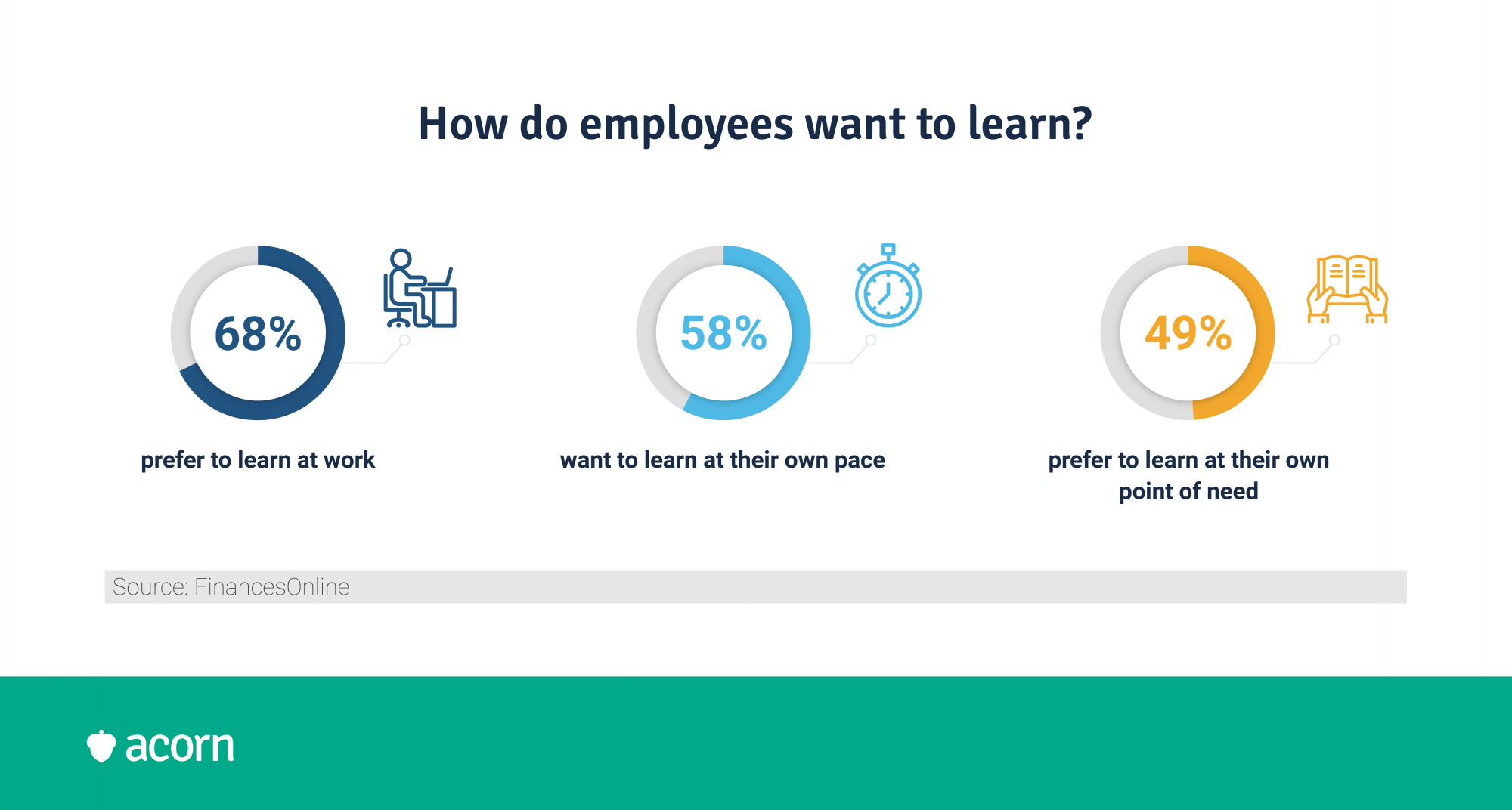
Considerations for your LMS
There are many elements that you will need to consider when implementing an LMS into your company’s educational workflow. Here are some of the most crucial ones:
- Create an intelligible learning path for your employees: There’s not really any point in teaching an entry-level employee the finer details of motivating subordinates when they first begin working at your company. Instead, create an eLearning pathway that begins with the basics of their role before moving on to more complicated, higher-level duties.
- Keep your learning paths current: Make sure that the content on your LMS reflects the company’s current goals and strategies. If this eLearning content is out-dated, it is simply a waste of resources and energy, and can lead to employee demotivation.
- Determine how long it should take: Though each employee is able to move at their own speed when interacting with eLearning content, there’s no point in having them race through and complete their level of designated training before it’s applicable. For example – an employee’s management skills should be honed and trained as they approach a promotion to this position, and not several months beforehand, as they may discard crucial insights as being irrelevant for their current position.
All in all, integrating an LMS throughout your company’s notion of an employee lifecycle can provide myriad benefits for employees, their managers, and the company as a whole.
Key takeaways
Onboarding sets the tone for the rest of an employee’s career with your organisation. A personalised yet streamlined experience within an LMS ensures HR can track each new hire as they onboard and move into professional development. Learning tech also gives L&D the power to create and update content as information changes and employees easy access in the moment of need.
That last point is incredibly important to all stages of the employee lifecycle. If a new hire can’t find a peer to query, if an employee is hitting a brick wall in their day to day, if a leader needs a refresh on conflict resolution, and LMS provides a central place for them to access in their own time and when training is going to have the most impact.
Take control of your eLearning priorities
Related Reads on This Topic

Increasing Employee Engagement with an LMS
70% of employees aren’t engaged at work. The right LMS can get that number down quickly.
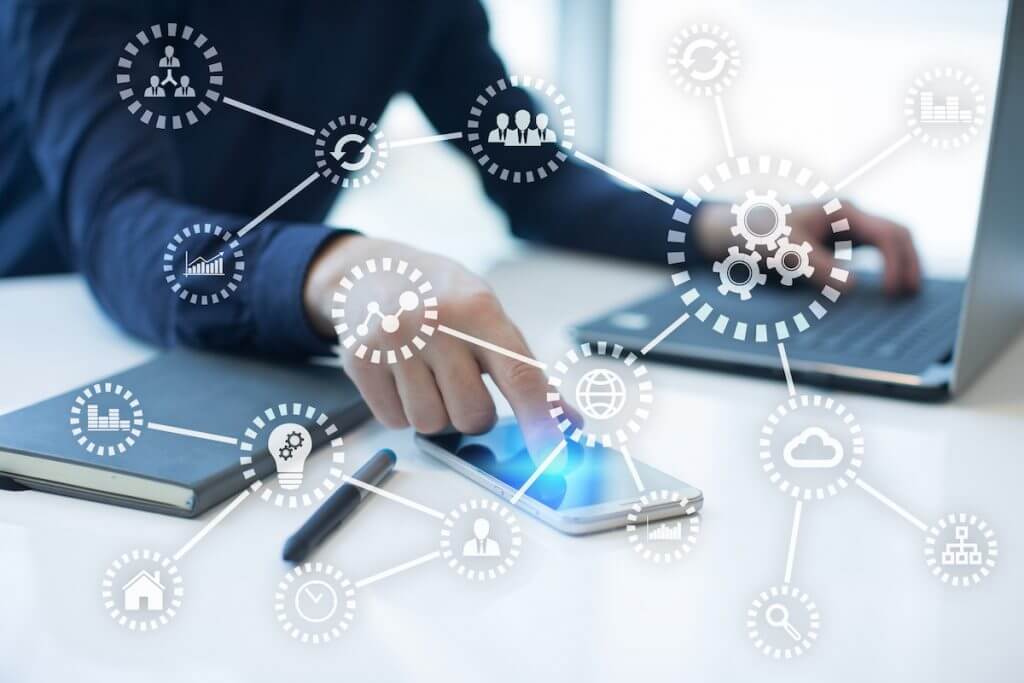
Attract, Train and Retain with Training Automation
Why not streamline the employee lifecycle and all the data entry that comes with it?

Why Is the LMS User Experience So Important?
UX impacts EX which impacts ROI. That includes you administrators, too.
